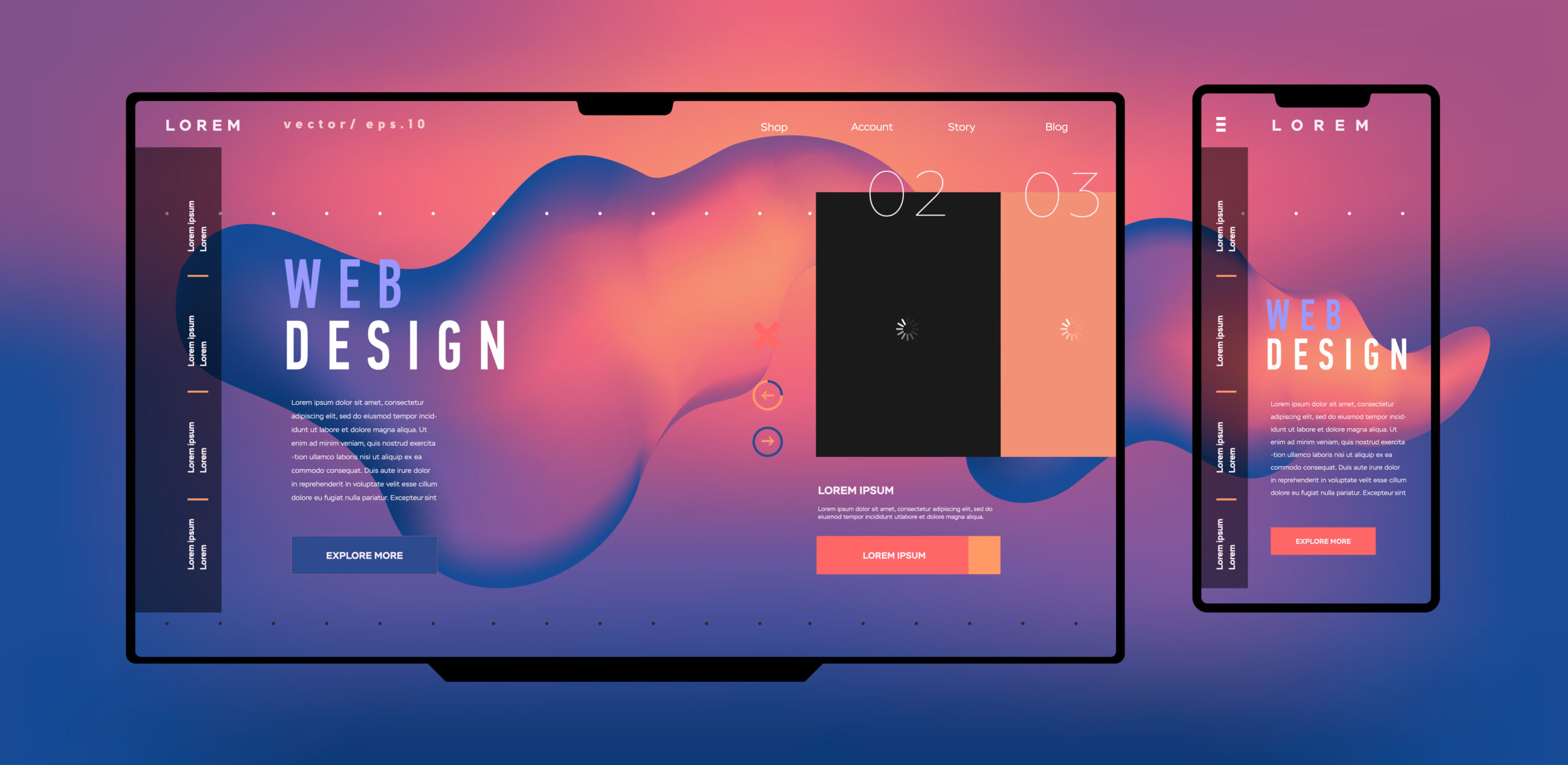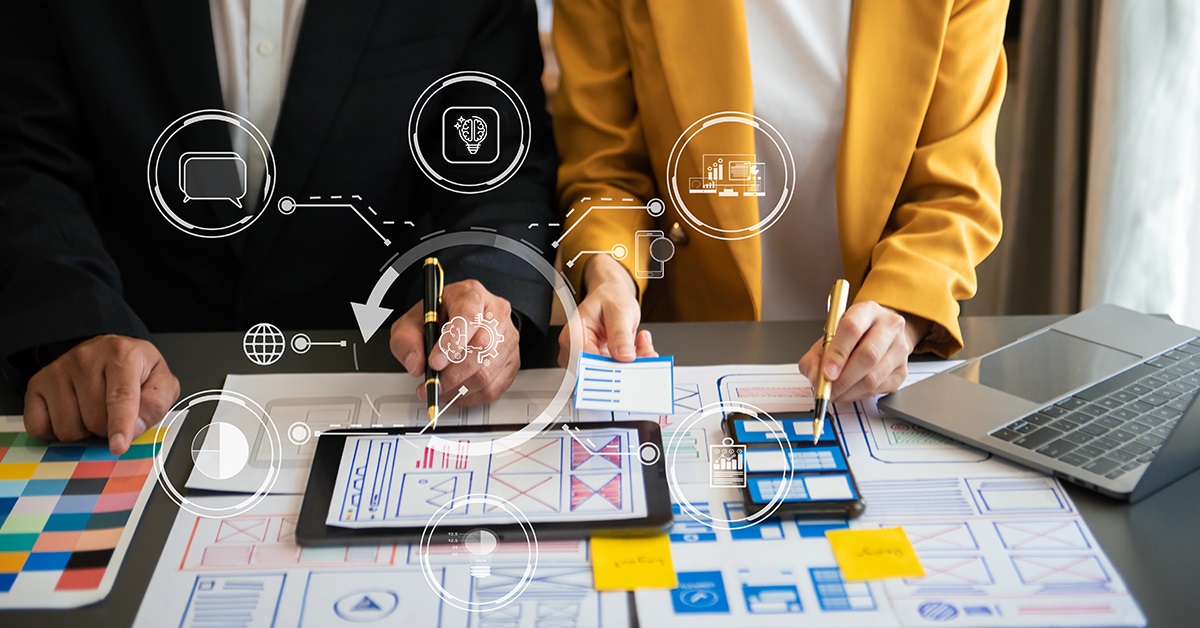The role of feedback and analytics in improving Web Design Agency performance
Wiki Article
Discovering Innovative Fads in Web Design for Modern Services
The landscape of web design is consistently evolving, reflecting the dynamic needs of modern-day services. Current trends highlight a choice for minimalism, strong typography, and engaging interactivity. Business significantly focus on user experience through mobile-first concepts and customized material. Additionally, a concentrate on sustainability is acquiring grip. Recognizing these fads is essential for companies intending to attract attention in a jampacked industry. What implications do these shifts hold for the future of digital involvement?Embracing Vibrant Typography
Bold typography has emerged as a specifying component in contemporary web design, recording interest and conveying messages with striking quality. This pattern prioritizes aesthetically impactful message that enhances user engagement and brand identity. Developers usually use oversized font styles and distinct fonts to develop a power structure, directing audiences via web content effortlessly.
The critical use vibrant typography enables effective narration, allowing brand names to connect their worths succinctly. It offers not just aesthetic objectives however additionally useful ones, as it improves readability throughout tools and screen dimensions.
As sites contend for user interest, bold typography stands apart in a saturated digital landscape. Its flexibility allows developers to experiment with contrasting layouts and shades, further amplifying its effectiveness. Eventually, embracing strong typography represents a change towards more communicative and expressive web design, fostering a deeper link between brand names and their target markets.
The Increase of Minimalist Design
As electronic settings come to be significantly messy, the increase of minimalist style offers a renewing option that prioritizes simpleness and functionality. This design philosophy remove unneeded elements, permitting web content to take spotlight. By concentrating on tidy lines, ample white space, and a minimal color palette, minimal layout boosts user experience and boosts navigation.Organizations adopting this pattern objective to convey their brand message clearly and properly, cultivating a sense of tranquility and clarity. The lack of distractions helps customers concentrate on crucial info, leading to enhanced engagement and conversion rates. Additionally, minimalist style lines up well with mobile-first methods, making certain that internet sites remain obtainable and straightforward across numerous tools.
Ultimately, the surge of minimal design mirrors a broader change in the direction of prioritizing user needs and preferences, making it an effective device for modern services seeking to make an enduring effect in the electronic landscape.
Immersive Animations and Interactivity
While lots of web developers embrace minimal aesthetic appeals, an additional compelling trend obtaining traction is the usage of immersive computer animations and interactivity. This strategy improves user involvement by producing intriguing experiences that draw visitors into the content. Developers utilize dynamic elements such as computer animated histories, scrolling results, and interactive infographics to interact complex ideas in an obtainable manner.These computer animations not just supply visual interest but additionally overview customers via the navigation procedure, making communications more intuitive. Float effects and animated changes can urge customers to discover additionally, leading to increased time spent on the site.
This pattern lines up with the more comprehensive movement in the direction of storytelling in web style, where computer animations offer as narrative tools that communicate brand name messages successfully. By incorporating immersive computer animations and interactivity, services can differentiate themselves in a crowded online landscape, ultimately improving user contentment and brand loyalty.
Mobile-First Design Principles
Mobile-first layout concepts highlight prioritizing user experience by making certain internet sites function flawlessly on smaller displays. This method integrates responsive design techniques that adjust to numerous tool sizes while keeping visual integrity. Furthermore, it focuses on touchscreen navigation design, boosting usability for mobile customers.Prioritizing User Experience
Just how can developers properly prioritize user experience in an increasingly mobile-centric world? Emphasizing mobile-first style principles is necessary, as users largely engage with internet sites via mobile devices. This method motivates designers to streamline web content, ensuring it is easily obtainable and navigable on smaller screens. Trick techniques include simplifying navigation, lessening load times, and using touch-friendly elements that enhance interactivity. Furthermore, focusing on readable typography and user-friendly formats can considerably boost user satisfaction. Developers ought to continuously collect user feedback to refine their strategies, adjusting to evolving user needs and choices. By focusing on these aspects, businesses can create an interesting electronic experience that fosters loyalty and drives conversions, ultimately lining up with the expectations these days's mobile individuals.Receptive Format Methods
Designers embrace responsive format strategies to create flexible and adaptive web experiences that deal with different screen dimensions. This approach prioritizes mobile-first design principles, making sure peak capability on smaller sized gadgets before scaling up for larger displays. By making use of fluid grids, flexible pictures, and media questions, developers can maintain a cohesive visual identification across all platforms. This technique not just enhances user involvement but additionally boosts online search engine rankings, as mobile-friendly websites are preferred by search formulas. Additionally, look what i found responsive designs permit companies to reach a wider target market, accommodating individuals on desktop computers, smart devices, and tablet computers alike. Generally, implementing these strategies is vital for contemporary web design, making certain that businesses stay affordable in an ever-evolving electronic landscape.Touchscreen Navigating Style
With the rise of smart phones, touchscreen navigating has ended up being a fundamental aspect of web design. Developers browse around these guys are progressively adopting mobile-first principles to enhance user experience and involvement. Web Design services. Effective touchscreen navigating focuses on bigger buttons and intuitive motions, allowing customers to communicate easily with web content. This method decreases disappointment and encourages expedition, as individuals can browse perfectly with their fingers. Additionally, incorporating swipe gestures and tap capability satisfies the natural behaviors of mobile customers. Comments systems, such as visual cues and computer animations, enhance usability additionally by validating activities. As touchscreens control user communications, utilizing these style components not only aligns with contemporary assumptions but likewise cultivates a more delightful and available browsing experience for all individualsPersonalized User Experiences
What makes a user feel truly engaged on a site? The solution typically hinges on individualized user experiences. By tailoring material and navigation to private preferences, organizations can develop a purposeful connection with their audience. This customization can be accomplished with numerous methods, such as examining user behavior, making use of cookies, and using customized recommendations based on previous interactions.E-commerce platforms that suggest products based on browsing history not just improve user experience yet additionally increase conversion prices. Moreover, integrating vibrant material that adapts to the user's location or time of day can even more enrich engagement.
Additionally, customized greetings or messages can make users really feel valued and understood. As contemporary services seek to stick out in an affordable digital landscape, welcoming individualized user experiences ends up being necessary, fostering loyalty and motivating repeat brows through. Eventually, this strategy transforms a typical web site right into an interactive system that resonates with its target market.
Sustainability in Web Design
As the electronic landscape remains to evolve, the value of sustainability in web design has gotten substantial focus. Developers are progressively knowledgeable about the environmental influence their developments can have, motivating a shift in the direction of green practices (Web Design Agency). Sustainable web design focuses on optimizing web sites to lower power usage and carbon footprints. Approaches consist of making use of minimalistic layout concepts, maximizing pictures, and using reliable coding practices to enhance loading speedsFurthermore, the selection of organizing suppliers plays a Get More Information vital function; many designers are currently going with environment-friendly holding solutions powered by renewable resource. By prioritizing availability and user-friendly navigation, sustainable designs also deal with a wider target market, improving usability. This aware technique not only allures to environmentally-minded consumers but also adds to the total longevity and effectiveness of web sites. Inevitably, sustainability in web design mirrors a growing fad towards responsible digital practices that align with contemporary business values.

Often Asked Concerns
Exactly How Can I Select the Right Color Design for My Site?
To choose the best shade system for a site, one must think about the brand name's identity, target market, and psychological impact. Using shade theory and testing mixes can improve user experience and visual charm considerably.What Are the most effective Tools for Prototyping Internet Styles?
The best tools for prototyping website design consist of Figma, Lay out, Adobe XD, and InVision. These systems supply user-friendly interfaces, cooperation attributes, and extensive libraries, making them excellent for developers to produce and fine-tune their principles effectively.Exactly how Do I Measure the Effectiveness of My Web Design?
To measure web design performance, one need to assess user involvement metrics, conversion prices, and use responses (Web Design services). A/B testing and heatmaps can additionally offer understandings into user behavior, leading necessary modifications for better efficiency and user experienceWhat Are Typical Web Design Blunders to Avoid?
Usual web design mistakes include chaotic formats, inadequate navigating, slow loading times, lack of mobile optimization, poor contrast, and ignoring user responses. Staying clear of these mistakes boosts user experience and enhances total performance of the internet site.Exactly how Commonly Should I Update My Website Style?
A website design should be upgraded every a couple of years, or sooner if significant changes in branding or technology happen. Regular updates maintain the website fresh, useful, and straightened with present user assumptions.
Report this wiki page